Disclosure: Meeple Mountain received a free copy of this product in exchange for an honest, unbiased review. This review is not intended to be an endorsement.
2022 has been a banner year for Uwe Rosenberg fans. It’s the 15th anniversary of Agricola and the 25th anniversary of Bohnanza so, of course, that necessitated special editions of both. Caverna saw a new expansion released, Agricola got a new deck, and Patchwork is receiving the retheme treatment.
On top of all that, 2022 sees Uwe Rosenberg adding four brand new titles to his roster: Oranienburger Kanal (his first to be crowdfunded on Gamefound), Atiwa, and the newly announced Applejack—which are due out later this year—as well as the subject of this review, Framework, which has already been released.
Overview
Framework is an abstract strategy game which will have the players drafting tiles from a random selection to add to their own personal tableaus. Tiles will feature scoring tasks, different colored ‘frames’, or some combination of both. Each player has a supply of markers that they are racing to place out before their opponents. In order to place a marker, one of their tiles must score. And scoring tiles involves building networks of frames in such a way as to meet the criteria shown on the tiles. If a player is able to place all of their markers first, they win the game.
Of course, this is a very high level overview. If you’d like to skip ahead to find out what I think of the game, feel free to scroll on down to the Thoughts section. Otherwise, read on as we learn how to play Framework.
Setup
Give each player a set of player markers, toss the tiles into the bag, and then draw one tile per player plus one more to create an offering. Select a starting player and you’re set.
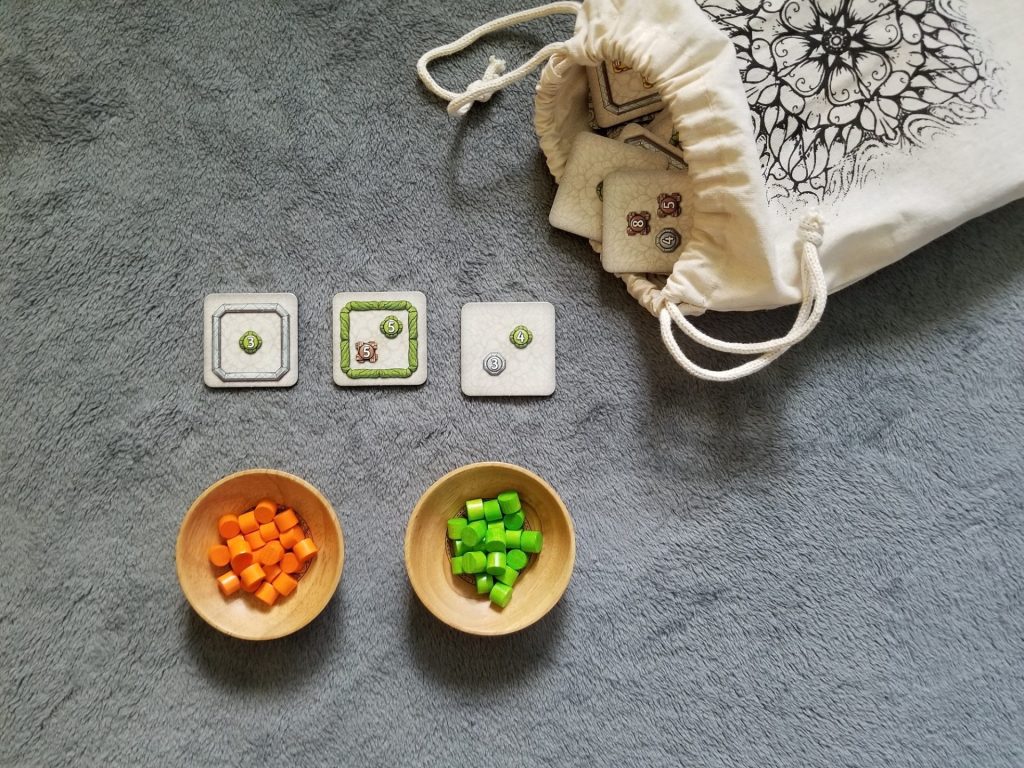
Yep, setting up a game of Framework is really that easy.
A Round of Play
Beginning with the starting player, each player will take turns selecting one of the tiles from the offering to add to their tableau. Once the starting player has picked up their second tile, they will pass the bag of tiles to the next player who becomes the starting player for the subsequent round.
This continues until one player manages to place their last marker, at which time the game ends instantly with that player as the victor.
So how do you score tiles? Glad you asked.
Scoring Tiles
As mentioned in my overview, each tile in the game will feature some sort of task, some collection of frames, or some combination of both.
In general, each task tile features at least one number printed atop a colored symbol. The color of the symbol indicates which color frame must be connected via a network of frames in order for the task to be scored. The number indicates how many of those frames must be part of that network. We’ll call this type of task tile a ‘single color/number combo’.

There are three other types of task tiles: morphed color/number combos, either/or color/number combos, and ‘do this before you do that’ color/number combos.*
Morphed color/number combos can be scored using a combination of the two colors indicated, so long as at least one of each color is directly connected to the tile. Or you could just use one of the colors. It’s entirely up to you. Each of these tiles has three opportunities to score if you’re able to increase the size of the network to make it large enough.

Either/or color/number combos can only be scored using one of the indicated colors, your choice.

‘Do this before you do that’ color/number combos require you to first fulfill the condition on the left of the arrow before you can fulfill the condition on the right.
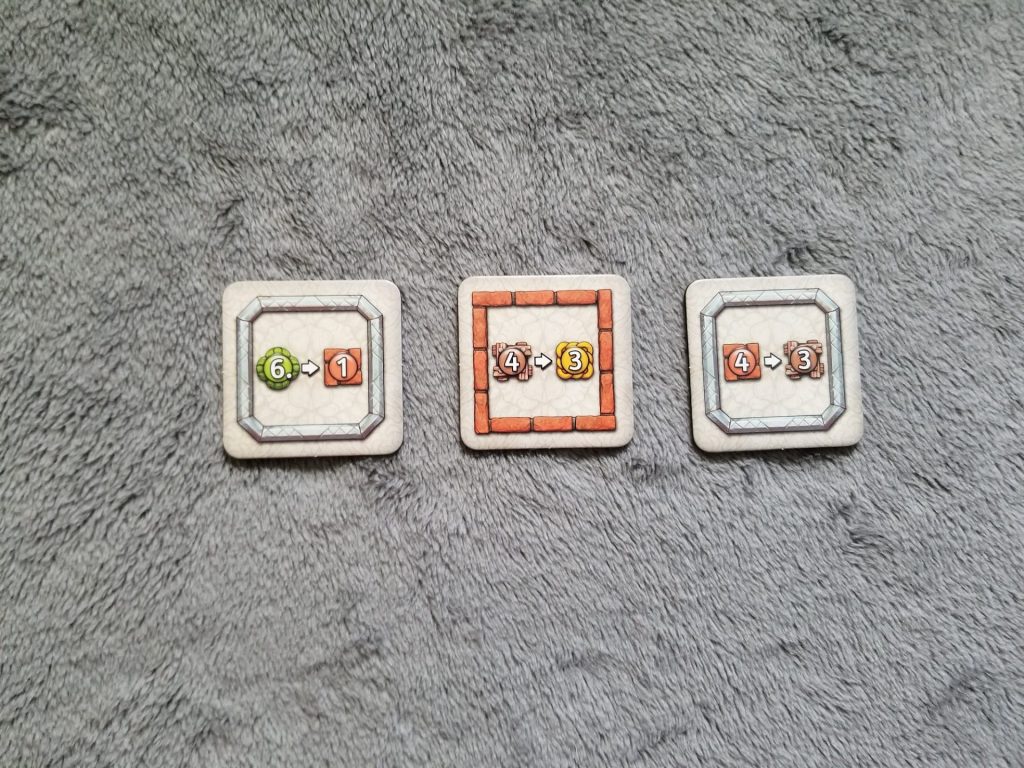
*NOTE: This is not official game terminology. These are just names that I made up in order to describe the scoring criteria.
Thoughts
My first thought after reading Framework’s rule book for the first time was something along the lines of: “This is just Nova Luna without the time track”. And that notion was further solidified after playing it with my wife for the very first time. At first glance, the two games do bear a striking resemblance to one another mechanically. Both see the players drafting tiles to add to their personal display in a race to place all their markers out onto the board before their opponents; the only difference being the way that the tiles are drafted.
And then I played it with three people that had never even heard of Nova Luna before, much less played it. Seeing the way that they interacted with Framework made me realize that when it comes to Uwe Rosenberg, I’m a bit of a snobby know-it-all. And there’s nothing wrong with that. He’s my favorite designer and I’m passionate about his games. You’d be hard pressed to show me one person that has a passion that they don’t feel they’re an expert on.
The problem with being an expert sometimes is remembering that not everyone else is. While I am comparing each of Rosenberg’s games to the entirety of his oeuvre, nodding my head in appreciation of how I, as a fan, am able to see his ideas evolving from one game to the next, the people around me are just enjoying the game in front of us for the separate entity that it is. I have become that irritating art critic at the art show where everyone else is just digging the cool paintings. That four player game opened my eyes to what I’ve become. So, I put down my mental notepad, rolled up my sleeves, and just dug into Framework as if I’d never ever heard of Nova Luna before and I thoroughly enjoyed the experience. That’s not going to stop me from comparing them here, though.
Framework, as it turns out, may be genetically similar to Nova Luna with the same eyes and the same chin dimple, but it’s its own person. There are two key differences that, for want of a better phrase, make all the difference: the way that the tiles are drafted and the way that they’re scored.
The tile draft in Nova Luna is dynamic, taking place along the outer edges of a time track. A player is only allowed to choose from one of the next three tiles in front of their time track marker and the number printed on the tile will cause their time track marker to leap ahead that number of spaces. Since a player’s turn ends once their time marker passes up whoever is currently ahead of them on the track, this means that the active player is only ever going to be guaranteed a single decision. They could possibly make more selections if there is a large gap between themselves and the next player, though.
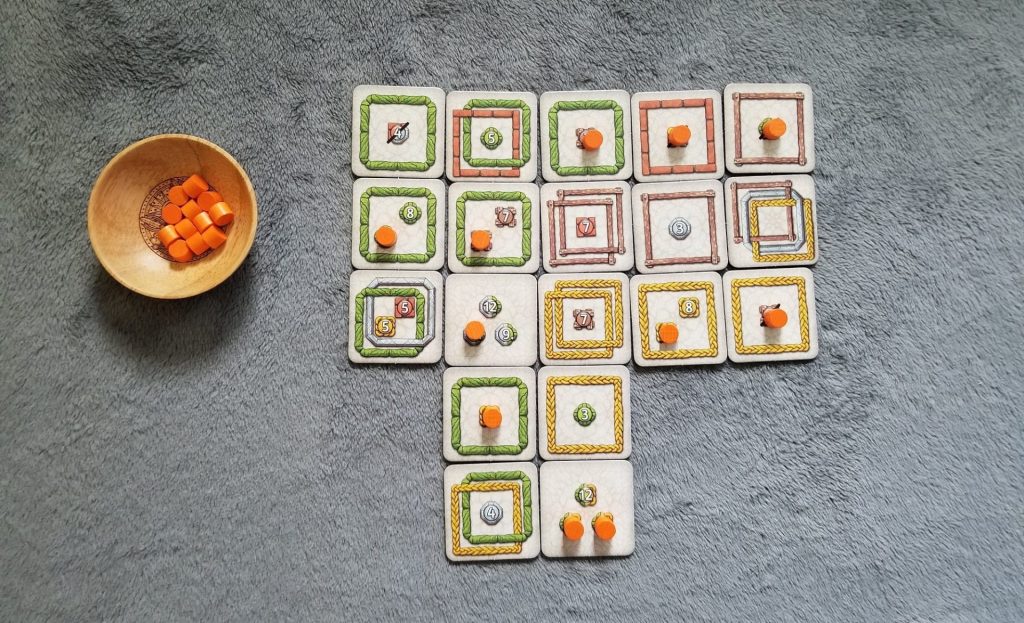
The fluidity and ever changing nature of Nova Luna’s selection mechanism means that the decision space is wide open with a lot of variables and factors to consider: how your selected tile will benefit you, how it will help/hinder your opponents, how far it will move you along the time track, and whether or not that movement would end or extend your turn. In comparison, Framework’s mechanism is much more rigid. If you’re the active player, you’ll be getting two tiles. Otherwise, you’re only getting one. This makes it both easier to quickly determine what works best in your own tableau and, almost as importantly, what works best in your opponent’s. In essence, Framework’s no-nonsense approach to tile drafting makes it much easier to ‘spite draft’ tiles in order to deny them to your opponents. This is much harder to do in Nova Luna as the selection pool has the potential to be much, much larger.
In Nova Luna, every tile drawn is in service to some other tile’s scoring condition. With the exception of the ‘1’ tile, every tile in the game is a specific color and contains a scoring condition. Not so in Framework. As discussed previously, there are multiple types of task tiles and this forces you to think differently about the draft and your tile placement than you would in Nova Luna.
In Nova Luna, your primary focus is on surrounding tiles with other tiles that play off of each other and, hopefully, score. In Framework, it’s more about building networks of frames and scoring tiles. Most of the strategy emerges in the tile draft as a result. Should you grab a frame that features a tile that ties in nicely with your existing network of frames or do you grab a tile without any frames so that you can add that node to your network and connect to it later?
Framework is all about the long game. In most games that I have played, four or five rounds will go by before anybody actually scores anything. Once that scoring floodgate is open, things begin coming together exponentially. I think it’s this aspect of Framework that I find the most thrilling. It gives you that engine-building thrill sans the actual building of any engines.
In the long run, Framework is a fine game on its own merits. If I were at a store and someone were standing in front of a shelf with Framework on it and wondering whether or not they should buy it, I’d go ahead and recommend it. However, if Nova Luna were on the shelf right next to it, I’d recommend that game instead. While I enjoy the challenge that Framework provides, I enjoy the added element of the time track in Nova Luna and what that brings even more. If you already own Nova Luna, then you probably don’t need Framework in your collection, unless you’re like me and must own every Rosenberg game ever.
Then again, Framework comes with a cloth bag for the tiles and Nova Luna doesn’t. And, if you know me at all and have read my reviews, then you know how I feel about that. If your game calls for me to randomize a bunch of tiles, then give me a bag to draw them out of. If that drives you crazy like it drives me crazy, then stick with Framework instead. It is also worth mentioning that, of the two games, Framework is the more colorblind friendly. Every frame has a different texture in addition to its color. So, that may influence your decision as well. Either way, you can’t go wrong.




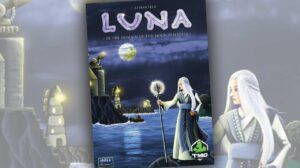
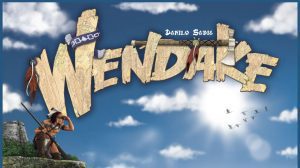






Add Comment